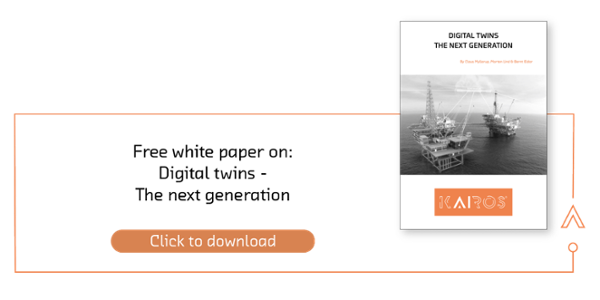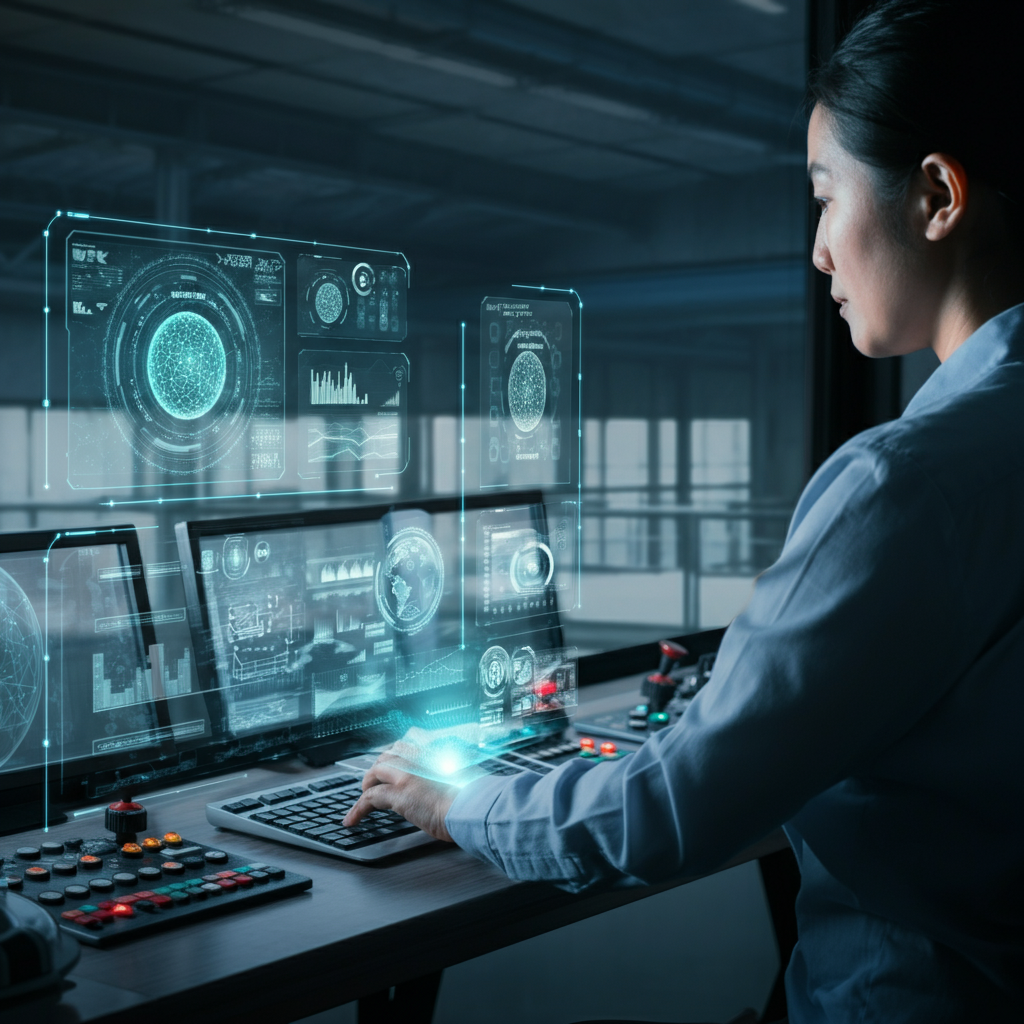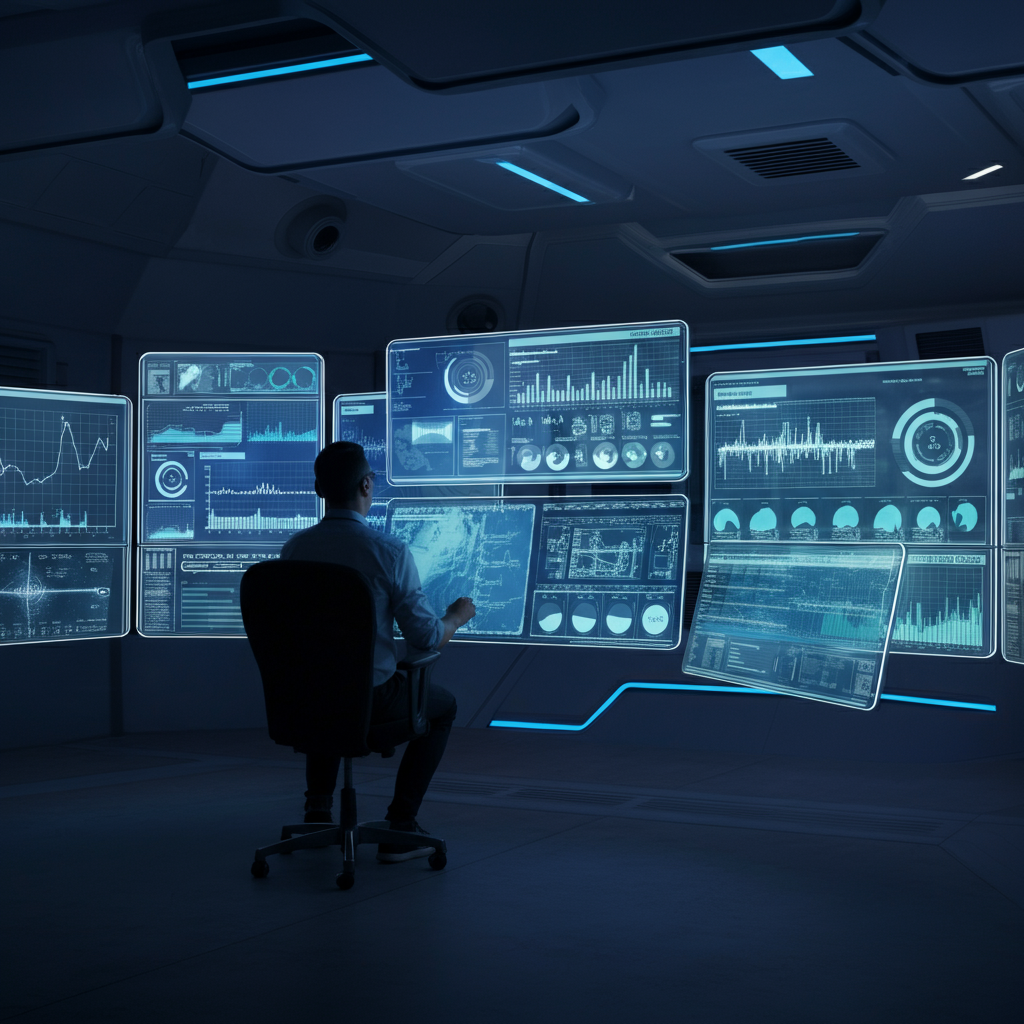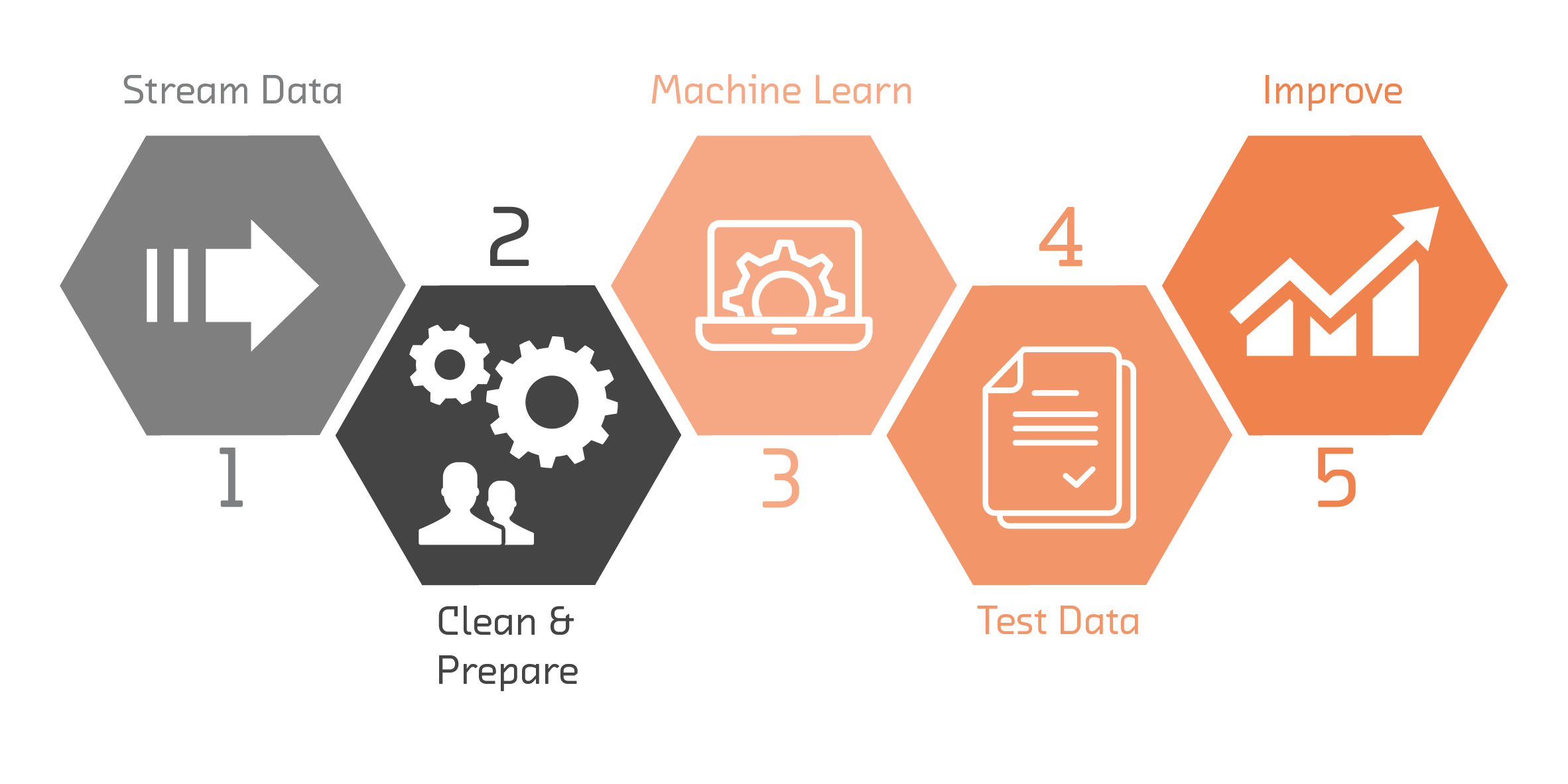Most production losses and safety-related issues begin as minor incidents that escalate into larger problems. The question is, how can we leverage data to prevent these small incidents from becoming major disturbances? The ideal goal is to operate as close as possible to theoretical efficiency limits while maintaining effective incident management.
Tackling Plant Performance Challenges
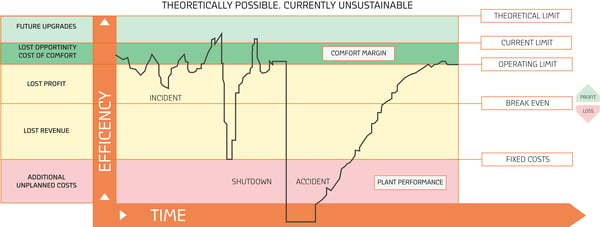
The illustration above demonstrates how plant production often fluctuates. The goal is clear—reduce time spent in inefficient, underperforming states (yellow regions). Control room operators play a central role in managing these disturbances, stepping in when automated systems fall short. Even with increasing levels of automation, we will still depend on human operators to make critical decisions in high-pressure situations.
Digitalization offers a promising solution. By applying advanced data analytics and digital twins, we can derive insights that assist operators in managing incidents more effectively. These tools enhance situational awareness, translating raw data into real-time, actionable insights that empower operators to respond decisively.
The Complexity of the Control Room
Operators rely on graphical interfaces and alarm systems in control rooms. These tools alert them to potential issues and provide the operational status of the plant. However, with complex systems and large volumes of technical data, the challenge lies in filtering through this information efficiently. The growing complexity of processes and support systems demands smarter tools to avoid information overload.
Will new technology improve production efficiency?
Yes, but only when it is implemented thoughtfully. Simply adding layers of technology risks overwhelming operators with more data and alarms, compounding the problem rather than solving it. The focus must be on deploying technology that enhances understanding, simplifies decision-making, and delivers clear insights during incidents.
The introduction of new technology must prioritize usability and effectiveness, ensuring it helps operators reduce downtime and mitigate risks without increasing their cognitive load.
Harnessing the Power of
Artificial Intelligence
Artificial intelligence (AI) has already transformed countless industries, offering groundbreaking applications in data analysis. By leveraging techniques like machine learning and deep learning, AI excels at identifying patterns, analyzing historical data, and providing predictions that support operational efficiency.
While tools like ChatGPT exemplify AI's capabilities, safety-critical environments demand AI systems that are deterministic, testable, and highly reliable. Operators must trust the results, and outcomes must be validated and presented transparently to build this confidence.
It’s vital to remember that current applications of AI in operations are classified as "Narrow AI." That means these systems outperform humans in specific, defined tasks, but lack the flexibility to handle unpredictable, complex scenarios. AI must be implemented cautiously to avoid unintended consequences, such as misinterpreting data from limited examples.
How can we trust the results and how can we expect a human operator to believe in the results?
The way we utilize AI within safety critical applications today falls into the category “Narrow AI”, meaning that AI is useful and may outperform humans, but only when applied to very specific tasks.
"A simple way to explain this is that in order to create a powerful program (deep learning or neural network) capable of recognizing cats, the AI algorithm must be provided between 100,000 and 1 million images of cats. In comparison, a human baby is able to recognize a cat after having seen just two or three images," - CEO of Total, Patrick Pouyanné (LinkedIn article March 4, 2019). The illustration below shows how easily we can recognize which images are of dogs and which are of bagels, but artificial intelligence will struggle with finding the difference with these few images.
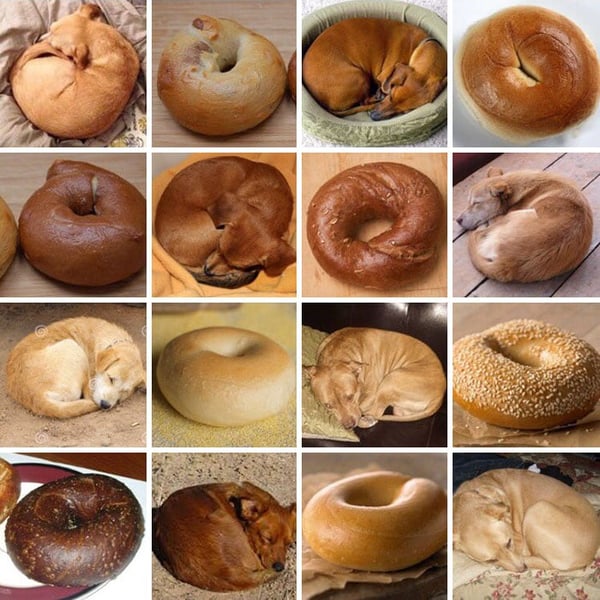
Image from twitter @teenybicsuit
AI without human interference is far away from being able to successfully deal with general complex situations. AI will have to be used carefully in order to avoid negative side effects of following wrong objective function or extrapolating from too few samples. The negative side effects will be making worse decisions as the relationships presented are not valid, nor accurate. For further reading on the topic: Concrete Problems in AI Safety (https://arxiv.org/abs/1606.06565).
Data visualization techniques
Existing data may be visualized using new techniques in order to get a better understanding of situations quicker. The real-world environment is mixed with computer objects. A simple example is the Head-Up Display in new cars, where key data is projected onto the car windscreen.
Similarly, smart glasses with a projection of key data can be used to visualize real objects, for instance, fluid temperature inside a pipe for field operators. Key data or the result of analysis and algorithms, may be used with CCTV camera feeds for an enhanced understanding. Combining 3D models with images and real-time data can be used for situations where the operator may choose to see through a wall in order to gather more information.
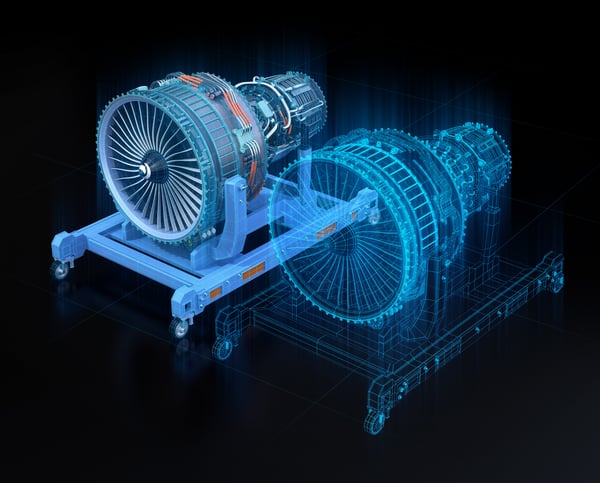
The Role of Digital twins
Digital twins provide virtual replicas of physical assets, powered by data-driven analytical models. These models integrate historical and real-time data to deliver unparalleled insights for process optimization and predictive maintenance.
An advanced digital twin combines explicit physical models with machine learning insights and human domain expertise. This hybrid approach strengthens decision-making by providing accurate anomaly detection, forecasting potential issues, and preventing incidents before they occur. Digital twins serve as a bridge between data and action, turning complex datasets into meaningful, actionable intelligence.
Moving Beyond Alarms to Insight
The future of digitalization lies in providing operators with actionable insights, not just more alarms. While advancements like IoT (Internet of Things) promise a flood of new data sources, caution is necessary. Overloading operators with extra screens and alerts will not improve decision-making and may even worsen the situation.
Instead, digital tools must focus on clarity, simplicity, and intelligence. Operators need concise, relevant information to act quickly and effectively during disturbances. By enhancing visibility, removing noise, and prioritizing critical data points, technology can become an integral part of improving plant performance.
A Digital-Optimized Future
Digitalization is revolutionizing the way plants operate, driving greater efficiency, safety, and resilience. By using tools like digital twins, AI, and advanced data visualization, plants can reduce disturbances, increase uptime, and unlock new levels of performance. The key is ensuring that these technologies are seamlessly integrated into workflows, providing operators with the support they need to make informed decisions when it matters most.
Digitalization isn't just the key to better plant performance—it's the future. The challenge lies in adopting it strategically and thoughtfully to harness its full potential.
Click below to learn how we can use the next generation of digital twins to increase insights resulting in increased plant performance and safer operation: